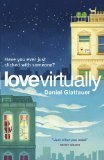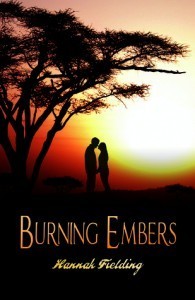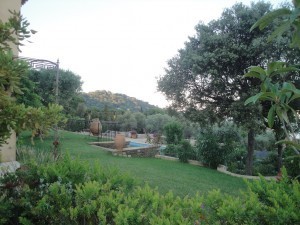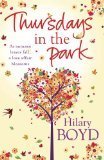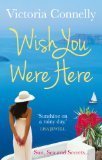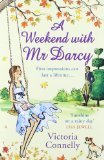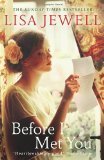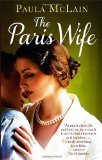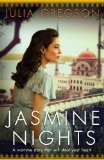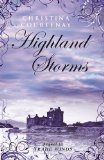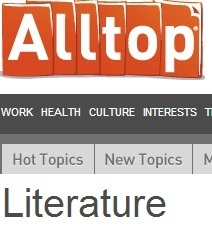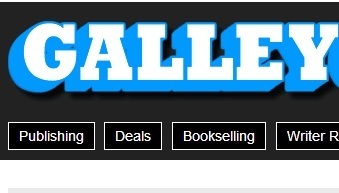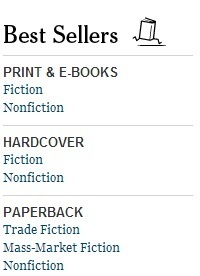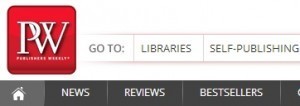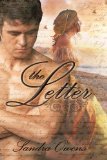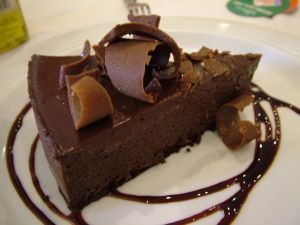Hannah Fielding's Blog, page 127
July 5, 2013
Book review: Love Virtually by Daniel Glattauer
From the blurb:
‘Write to me, Emmi. Writing is like kissing, but without lips. Writing is kissing with the mind.’ It begins by chance: Leo receives emails in error from an unknown woman called Emmi. Being polite he replies, and Emmi writes back. A few brief exchanges are all it takes to spark a mutual interest in each other, and soon Emmi and Leo are sharing their innermost secrets and longings. The erotic tension simmers, and it seems only a matter of time before they will meet in person. But they keep putting off the moment – the prospect both excites and unsettles them. And after all, Emmi is happily married. Will their feelings for each other survive the test of a real-life encounter? And if so, what then? Love Virtually is a funny, fast-paced and utterly absorbing novel, with plenty of twists and turns, about a love affair conducted entirely by email.
Love Virtually is a book originally written in German. After becoming a big success in that language it was then translated into English by translators Katharina Bielenberg and Jamie Bulloch.
What is original about this book, and its love story, is the format in which it is written – an email exchange between two people, a man and a women, who have never met before. A thoroughly modern twist to an age-old custom; indeed some of the best period love stories have been centred on the romance of letter writing or diaries – the epistolary novel. That simple act of writing down your innermost thoughts – things you could never say whilst looking into your lover’s eyes, which are given life by the simplicity of ink and paper and even greater power when you then give that note to your lover to read.
Yet I have to confess that despite my interest in the modern love letter email, I almost did not read this book. The idea of one of the main protagonists being happily married put me off somewhat. But without wishing to spoil the plot, suffice it to say that I am glad now that I did read the book, and I am definitely going to be reading the sequel very soon too.
Although this book is set in the virtual world of the email cyberspace, the protagonists – Leo and Emmi – both live in Austria. They ‘meet’ quite by accident, when Emmi mistypes an email address whilst trying to cancel a magazine subscription. Easily done! Most such mishaps don’t lead to friendship or even love, but soon such feelings are stirred for Leo and Emmi:
When an e-mail from you comes in, my heart begins to pound. I feel the same today as I did yesterday and seven months ago.
For me writing to you and reading your e-mails is like non-family time. It’s a little island outside my daily experience, a tiny island which I’d much rather inhabit with you alone, if you don’t mind.
The conversation between Leo and Emmi is relaxed and easy to read, even in the sometimes brief and interrupted email format – they flirt, they get angry, they tell jokes and they discuss their personal desires. Just like a true email exchange, you have to wait until after real-time events to find out what happened. You feel like you are snooping in on someone else’s private email conversation – because you are – and the experience is curiously addictive.
Leo and Emmi soon begin to question where this ‘virtual’ relationship is going and what each of them means to the other. Should they meet or would that be the beginning of the end for their relationship?
All in all, I am so glad that my curiosity over the writing style won over my concerns about the characters in this book. The writing was fun to read and exceedingly realistic as an email conversation, yet it was still descriptive and powerful when it needed to be. It is a real-page turner: I found myself so keen to know how the story would end, and I certainly did not expect the cliff-hanger ending that came.
If, like me, you enjoy listening to afternoon plays on the radio then you will be pleased to know that this book was adapted for BBC Radio Four, and read by David Tennant and Emilia Fox. You can get the MP3 of this here: http://tinyurl.com/6nua5go. Now that I have read the book, I will certainly be listening to this very soon.
Love Virtually is available now from Amazon; click on the book cover below to visit the store.
July 4, 2013
July giveaway: Win a £20/$30 Amazon gift cards and a copy of my novel…
Summer is here, and the warm weather and glorious colours always put me in a good mood! So this month I’m giving away:
Three copies of Burning Embers
A £20/$30 Amazon gift card
The giveaway is open to residents of the UK and US.
To enter, simply comment on this page by the end of 31 July, including your email address so I can contact you, telling me what you most love about summertime.
View across our garden in France
July 3, 2013
Romance novel covers: What draws you in?
There’s no doubt that book covers are an art form. Those who create the very best examples are talented artists and designers; take, for example, artists like Jon Paul and Elaine Gignilliat who paint covers for leading romance publishers. But of course book covers are more than art: they are function. A book cover must help to sell a book – it must stand out in a sea of competing titles and call to a romance reader; it must embody the sentiment and mood and key theme of the books; it must spark interest and imagination in the onlooker.
Of course, all readers are individuals with unique tastes. To bend slightly the words of Abraham Lincoln, ‘You can please all the people some of the time, and some of the people all the time, but you cannot please all the people all the time.’ So the publisher looks for the cover that will please the most people.
What features do you look for? What draws you in, and what puts you off? The following sections explore elements of covers in turn.
Font
It has to be clear, but also striking. I love romantic fonts – they instantly conjure up the mood of the book. For example, in the following cover the title font is an appealing feature of the cover which draws the eye.
Colour
For me, colour is essential in a romance novel cover. Colour says vivacity and passion, and it makes the cover stand out (especially among the often sombre colours of literary fiction, and the greys and blacks of paranormal and thriller novels). For example, initially I picked up the following book in a bookshop simply because the hue of the blue spoke to me, reminding me so much visits to the Greek islands (where the book is set).
Model(s)
In the romance genre you may find the love interest (male) alone on the cover, the protagonist (female) alone, or the two together, often in a seductive pose.
Some are entirely illustrated, and such covers can be very appealing for the romantic style of the artwork, as in the following novel:
Others are photograph based, and more grabbing and vivid. I love the simple romanticism created by flowers in this cover:
But I am perhaps more drawn to covers which really showcase the love story through the inclusion of both the lovers. Here’s a book I love whose cover really encapsulates the emotion of the love story:
Fashion
I think many female readers have an interest in fashion, and the hair and makeup style, jewellery and clothing of a model on a cover say a lot about the character’s personality, the era in which the book is set and the romanticism of it all. For example, this book cover really appeals to me, especially the wartime fashion of the heroine depicted:
Backdrop
Last but by no means least! Backdrop can do so much to sell a book, especially if the setting is of paramount importance in the novel. Take, for example, this book whose cover beautifully conveys its tempestuous, Scottish setting:
And for my own debut novel, Burning Embers, in which the sultry, beautiful, wild Kenyan setting is key to the love story, the lovers are depicted against a sunset and beneath the acacia classic tree.
July 2, 2013
Seven of the best news websites for readers and writers
Traditionally, both writing and reading are solitary, perhaps even lonely pursuits. But thanks to the digital revolution, no longer! Being a writer or reader can mean being part of a thriving, friendly online community, and – wonderfully – having access to literary-specific news sites designed to inform and foster a love of writing and books.
Why read the news? Well, if you’re reader, it’s an excellent source of information on new releases (you don’t want to discover three months after the event that your favourite author has released a novel, after all), and on book events, such as World Book Night. And for writers who are serious about publishing and honing their craft, book news is essential reading – to identify trends and opportunities, find inspiration and be ‘professional’ in your field.
Here’s a snapshot of must-read news websites for those who are interesting in keeping up-to-date with the latest happenings in writing, in authors, in books and in bibliophilia:
If time’s short, and you don’t get the chance to look at many sites, this one acts as a shopfront for a wide range of book-related websites. Well worth a browse.
For the latest news on the book publishing industry. The site does well at collating news items from all over. A super oracle for keeping up with trends, and easy to follow via email, Twitter or Facebook.
More than 16 million people belong to this book-focused social media site, and it’s really a home from home for any book lover. There’s been recent disquiet among members since Amazon bought the platform earlier this year (see this Guardian article), in case Goodreads becomes overtly commercial, but it remains a wonderful way to connect with other readers and writers and to discover great new books. Follow your favourite writers for instant access to their news, and also follow the Goodreads blog.
Thorough and intelligent articles on books. Also take a look at the Independent Books section.
(UK version here.) Syndicated news items about writing, books and publishing, plus some interesting original op ed pieces. I rather enjoy their image-led pieces on art; for example, take a look at this recent article: “’Light Artist’ Michael Bosanko Recreates Banksy, Da Vinci And Vincent Van Gogh With Stunning Results”. Very easy to share stories on social media, so ideal for Tweeting writers and readers.
Who’s got a much-coveted place on the bestsellers list this week? That’s the section I go to first! This week I see Sylvia Day is doing very well across a number of lists, showing the ongoing popularity of erotic fiction.
If you’re serious about publishing and want the hardcore news for the industry, take a look at this site, and also the UK’s The Bookseller.
Of course, there are many more sites. Do you have a favourite? One that has an interesting approach to news item selection, for example, or a witty take on the news? I’d love to hear about your favourite sites – please feel free to comment and add to the list.
Book review: The Letter by Sandra Owens
From the blurb:
The story of a betrayal that wasn’t. Even so, it still tore two lovers apart for eleven years. On the eve of their wedding, Michael Jeffres, Earl of Daventry, found his betrothed, the woman who meant as much to him as the air he breathed, in bed with his cousin. Diana, the daughter of a marquess, remembers nothing of that night. All she knows is she was forced to marry Michael’s cousin, Leo, and then spent the next eleven years in hell. When the two lovers are brought back together by a letter from Leo a year after his death, Michael and Diana must struggle through all the lies and secrets before they can find a love that far surpasses the one of their youth.
The Letter is a period drama which tells the tragic story of two lovers, Diana and Michael, who are torn apart by the deceit of Michael’s evil and jealous cousin Leo. The night before their wedding, Leo publically fakes an intimate moment with Diana, disgracing her so that she is forced to marry him instead of Michael, leading to eleven years of psychological and physical abuse for Diana at the hands of her callous husband. A year after Leo’s death, Michael receives a letter from Leo explaining his hideous deeds and the fact that he has left Diana destitute. Leo cruelly boasts that at his hands Diana is now afraid of any man’s touch and that her son is in fact Michael’s. These revelations force Michael to go in search of Diana and his long-lost child, and he embarks on a journey to restore her faith in love.
He deserved her formality, but there had been a time when she had whispered his name while speaking words of love. Her hands, red and raw, the nails broken, were clenched tightly. Rage burned deep in his gut, souring his stomach. Between the two of them, he and Leo had destroyed a beautiful woman. He should prostrate himself at her feet and beg forgiveness.
Sandra Owens’ excellent use of description and characterisation really breathes life into the characters and settings in this book. From the reserved yet honourable Michael struggling to cope with the guilt of his actions, to the wicked and scarily evil Leo, Sandra has developed two male characters that, whilst representing the diametrically polar opposites common in period romances, are yet realistic and rounded within their world. Despite the horrors inflicted upon Diana, we are still able to see the strength of will and maternal vigour that will ultimately pull her through. In this way, I particularly enjoyed Diana’s character, as whilst she is in need of rescue by the hero, Michael, it is her inner strength that ultimately leads to the satisfying conclusion.
He had been doing his best to impress her with his witty remarks. She’d looked up at him and smiled. He had stumbled and almost fallen from the wonder of it. Her smile was the sunshine. It would keep him warm on cold winter days. It was a diamond, a thing of beauty… But after her years in his cousin’s hands, did she still smile?
Overall, I really enjoyed this book. Often period romances are characterised by an excess of sentiment, with a focus on wealthy beautiful girls living in a world of society balls and luxury; and of course this is why we enjoy the escapism of these books. However, whilst staying true to the principles of the genre, the fact that this book touches on the darker elements of the period – the forced marriage, the crippling poverty, the dominance of men and the dependence of women on their whims – gives it an edginess that makes it stand out as a real page turner.
Well-written, compelling, moving and memorable, certainly a book I recommend.
The Letter is available now from Amazon; click on the book cover below to visit the store.
June 27, 2013
The ultimate chocolate cake
As promised, here is my favourite chocolate cake recipe – easy and foolproof, and deliciously, decadently rich and morish. It’s an ideal base cake to decorate for an occasion, and it keeps well (two to three weeks).
Ingredients:
250 g unsalted butter
250 g dark chocolate (I love Green & Black’s)
8 tsp fine instant coffee
180 ml just-boiled water
150 g self-raising flour
150 g plain flour
60 g fine cocoa powder (again, Green & Black’s is divine)
1/2 tsp bicarbonate of soda
550 g caster sugar
4 medium eggs
8 tsp vegetable oil
125 ml full-fat milk
Instructions:
Preheat oven to 160 oC. Grease and line a 10-inch round tin.
Stir together the butter, chocolate, coffee and hot water over a low heat until all ingredients have melted and merged.
Sift together flours, cocoa and bicarbonate of soda. Stir in the sugar.
Beat together the eggs, oil and milk in a jug. Make a well in the centre of the dry ingredients and pour in the egg and chocolate mixtures. Stir gently until you have a runny, well-combined mixture.
Pour the mix into the tin and bake for 1 hour 50 minutes until a skewer inserted into the middle comes out clean. Cool the cake in the tin.
Enjoy!
June 26, 2013
‘Sweet’ romances: Digesting the trend of combining sweet treats with love stories
Chocolatier-created caramels and truffles and pralines and mousses that melt on the tongue and instantly release that ‘just fell in love’ hormone. Cupcakes topped with pink vanilla frosting and edible glitter made to share (icing endearingly smeared on a lover’s nose optional). Bakery window displays crammed with a mouth-watering array of cakes and cookies and biscuits and gateaux…
These are the backdrops and essential ingredients for many a romance novel today. They call it a ‘foodie’ romance: a love story that incorporates cooking or baking or dining, usually of the sweet variety: chocolate or cakes.
Did the trend begin with Joanna Harris’s bestselling romance novel Chocolat? Perhaps. As far back as one can trace, food and romance have gone hand in hand, but in recent years a veritable genre has emerged in romance writing to encompass sweet nothings fused with sweet somethings. Take Jenny Colgan, for example, who has woven sweet foods as a theme into several novels now (see my recent review of her The Loveliest Chocolate Shop in Paris), and this week I am reviewing another book in the subgenre: Baking Love by Lauren Boyd.
In a sense, the subgenre looks to strengthen the proposition of books to readers by combining two favourite elements. So the original romance formula is:
Romance story = happy romantic reader
But the revised formula is:
Romance story + sweets = happy romantic, sweet-toothed reader
And it’s a successful formula, as Jenny Colgan’s success proves – she’s a bestselling author and has just won the Romantic Novelists’ Association’s highest accolade, the Romantic Novel of the Year, for her novel Welcome to Rosie Hopkins’ Sweetshop of Dreams.
The idea, of course, is that a romantic reader is also a reader who enjoys creating and sharing and consuming sweet foods. It’s an assumption, perhaps, but a well-founded one. Women are nurturers, and we often nurture through food. And all people (but women especially) are programmed to enjoy sweet foods. For example, scientific studies have proven that chocolate contains serotonin, the ‘happy hormone’. What else boosts this hormone in the body? Well, kissing is one of the cited activities!
But in addition to the physical side of consuming sweets, and how sugar and chocolate create an emotional response that heightens romance, I think another factor is at play in the development of the foodie romance subgenre: career. Cupcakes, for example, have become increasingly popular in recent years, which has led to many women setting up their own cupcake businesses. Whether a small operation run from home alongside bringing up the kids, or a cake-based enterprise that aspires to have outlets and cafes and cookbooks (think Hummingbird Bakery), the world of sweets has become a domain in which women test and then spread their wings to find a creative, independent, fulfilling career. And of course, we fellow women celebrate that!
The foodie romance, then, is here to stay, I think. Its main limitation? Readers may decide they don’t want to read a book from the subgenre too often, because of the appetites it awakens! Why, this week reading a foodie romance inspired me to dust off my favourite chocolate cake recipe (which I will share next on this blog) – delicious indeed, but a treat to indulge in only occasionally.
June 25, 2013
The pace of the novel: Infusing ‘now’ with ‘then’
There is no denying that writing changes over time. Compare Dan Brown to Edgar Allen Poe, J.K. Rowling to C.S. Lewis, E.L. James to Jane Austen. Of course, society has changed so much in the past 100, 200 years that stories and settings and characters are radically different also. But when comparing then and now, there is a style to the ‘then’ novel that I think perhaps modern writers are too quick to dismiss: the slower pace; the more measured speed of the storytelling.
The modern world moves at a dizzying speed. Just go to your nearest city, stand on a corner in rush hour, and watch the world dash past you. Everyone is in a hurry. We text a friend rather than write a letter. We multitask eating, drinking, travelling and reading. We don’t walk, we run.
There is a trend in modern writing to reflect the modern pace of the times in the pace of the book. The reader is thrown straight into action, and from that point on the plot gallops along – little time for reflection or detail or grounding. The expectation is that readers are impatient by nature, and will give up on a book if not constantly led along; that readers have poor attention spans and will skip long paragraphs of prose, racing on to the next paragraph of dialogue. A book that bears any resemblance to the tradition of storytelling is deemed ‘slow’, and the inference is very much that ‘slow’ is a bad thing, because everything in life should be fast.
And yet, when you read the classic works of literature, they are most certainly slow, and I would not agree that is a bad thing at all. Look at Victor Hugo’s Les Misérables. Certainly, it is hard to get through the 2,783 pages of the book, and no critic would revere such a lengthy, digression-rich novel today. And yet Les Misérables is considered one of the greatest novels of the 20th century, and even 150 years after its first publication, still the book is beloved worldwide and it has been the inspiration for the most popular musical in the world, plus a recent multi-award-winning film.
When considering the change in pace in novel-writing, the question becomes:
When you speed up a story, what element suffers?
The answer is depth. Detail. When you’re galloping along in narration, you’ve no time to describe carefully a room or a person or a sentiment. You’ve no time to explore how the character thinks and feels about an event, because you’re too busy ploughing on with narrating the next event. You leave so many who, what, where, when and how questions unanswered, unexplored. You give a reader a snapshot of a story, not the full story.
Read any of your favourite authors from yesteryear and you’ll see what I mean: then, a slower pace is evident than that of most books today. But is that a bad thing? Are you bored? Impatient to get to the end? Or in fact is the reading process all the more pleasurable for the fact that you are really immersed in the story, that you are taking time to consider ideas, that reading the book is a true escape for you? Do you find the reward of reading better when racing through a story at a surface level, or when really experiencing that story? Is slow always a bad thing, or was the Chinese philosopher Lao Tzu right when he said, ‘The slow overcomes the fast’?
June 24, 2013
“On life’s vast ocean diversely we sail”
 There are often regattas in the Bay of St Tropez. We watch the beautiful sailboats go by from our balcony and it’s like being at the cinema.
There are often regattas in the Bay of St Tropez. We watch the beautiful sailboats go by from our balcony and it’s like being at the cinema.

